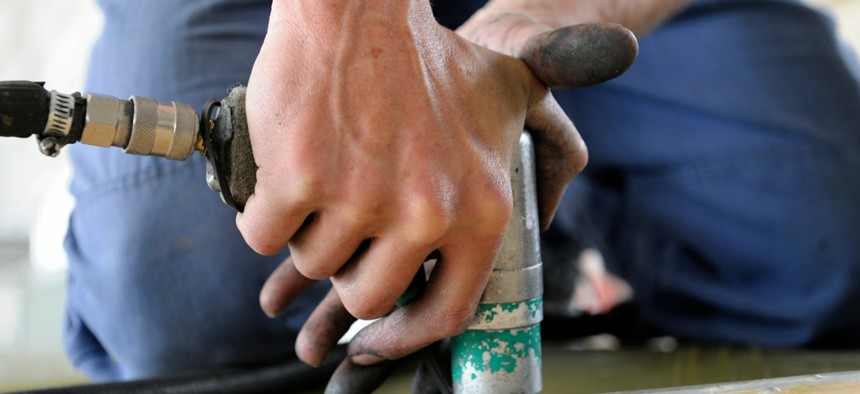These Jobs Are Most Susceptible to Automation

Construction supervisors are among those least at risk of losing their jobs to automation. Shutterstock

Connecting state and local government leaders
A new report from the National League of Cities ranks 60 occupations in terms of whether they are vulnerable to being automated, suggesting ways city leaders can work with their residents to prepare.
Restaurant workers, including cooks, waitstaff and fast-food servers, are among those most at risk of seeing their jobs overtaken by automation, according to a new report from the National League of Cities.
In some of those instances, automation doesn't require new technology.
“While the category of waiters and waitresses has a high degree of automatability, the traditional function of the job itself requires a person,” says the report, titled Assessing the Future of Our Work: Automation and the Role of Cities. Instead, automation could reshape the dining environment itself. “This vulnerability would likely be reflected in a shift toward kiosk ordering and fast-casual dining establishments.”
A shift to a different kind of restaurant service is already a reality in some places, including San Francisco, where many restaurants are operating without waitstaff thanks to skyrocketing housing prices that have pushed low-wage workers out of the city.
The report, released this week, ranks 60 occupations in terms of their likelihood of being automated, from low to high. The research aims to help city leaders recognize trends in their communities and formulate plans for the future, including expanding educational opportunities for residents and considering ways to attract new and stable industries.
“Despite the misconception that automation poses a threat only to those in certain types of occupations, there is potential for displacement in every industry and sector, and at every skill level,” the report says. “This is why incentive structures should shift from mere placement to economic mobility, competitive wages, and long-term stability.”
In addition to food-service workers, jobs considered most vulnerable to automation include landscapers and groundskeeping crews, accountants, auditors, carpenters and receptionists. The report also concludes that personal care aides are at high risk, despite being one of the fastest-growing occupations in the country, projected to add 777,700 jobs to the domestic labor market before 2026.
Jobs rated as having a medium possibility of being automated include janitors and cleaners (but not maids or housekeepers), elementary school teachers, teaching assistants, dental assistants and plumbers. That group also includes market research analysts and some truck and delivery drivers, which research has suggested are “fully automatable” jobs.
Jobs that are the least vulnerable include office and construction supervisors, electricians, nurse practitioners and heavy tractor-trailer truck drivers. Generally, people in management positions are the least susceptible to automation, the report says, as those jobs “exhibit many of the soft and analytical skills that are critical for future work.”
Several jobs were also identified as not being susceptible to automation. Those include nurses, nursing assistants and post-secondary health educators.
The report also addressed the effects of automation on cities, noting that municipalities are least at risk if they “have strong connections to education, tend to leverage more federal funds, and invest in a diverse mix of occupations.” Economies in those cities tend to be well diversified, “meaning they are less vulnerable when one industry changes or decelerates.”
To prepare for automation, the report advises cities to plan ahead—taking stock of federal programs that can help and “enhancing the ability for individuals to get work experience and exposure to technical jobs,” which may be less at risk.
“The most critical and immediate challenge for cities will be confronting the problem of inequality not just from within workforce programs, but also at the social safety net level and/or through social protections as a whole,” it says. “Success can no longer be tied to a job placement.”
Suggestions for cities include revising business development programs to consider equity, promoting investments in low-income neighborhoods and helping bridge the gap between the demands of local industries and the skillsets of residents. That could include revising education and workforce training programs.
"As cities prepare for the future of work, they must work with business leaders, educational institutions and community-based organizations to ensure that workforce needs are fulfilled by regional training and educational programs," the report advises.
Kate Elizabeth Queram is a Staff Correspondent for Government Executive’s Route Fifty and is based in Washington, D.C.

NEXT STORY: Virginia Approves Workforce Training Grant for Beer, Cider, Wine and Liquor-making




